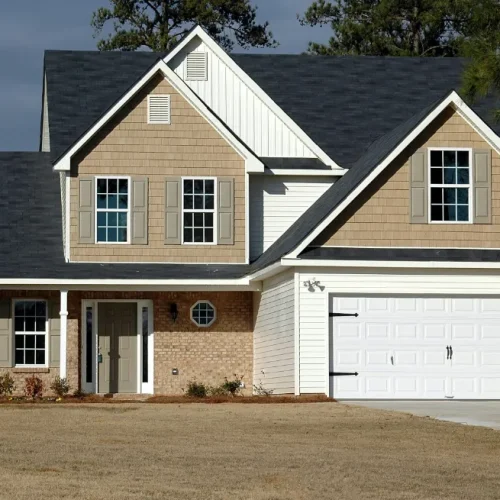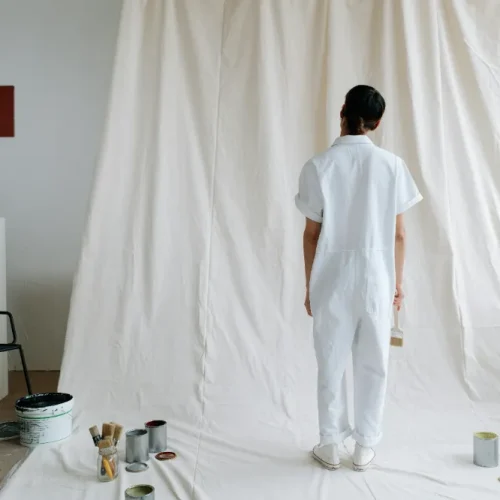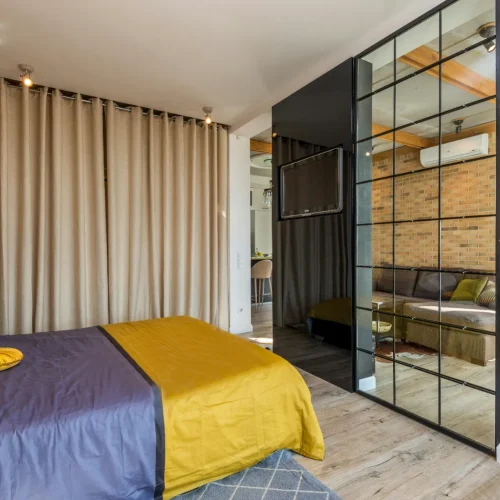
If there’s anything I’ve learned from years of repainting bathrooms, redoing laundry rooms, and trying to rescue peeling walls, it’s that high-moisture rooms follow different rules. Bathrooms turn into steam chambers in minutes, kitchens fill with humidity from boiling pots, and basements often feel damp even on perfectly sunny days. These spaces may look harmless, but moisture quietly destroys paint faster than almost anything else you can put on your walls. I’ve watched fresh paint bubble overnight after a long shower, I’ve scrubbed a bathroom wall thinking it was dirty only to realize I was wiping the paint off and I’ve dealt with yellowing, cracking, and mildew spots that simply wouldn’t stay gone. Eventually, I discovered that choosing the right paint type isn’t just helpful in humid rooms it’s essential.
Why Moisture Changes the Rules of Painting Entirely
Moisture is sneaky. Even when a wall feels dry to the touch, the humidity inside the room can keep the surface slightly damp underneath. That moisture prevents proper adhesion and causes everything from bubbling to peeling. Over time, humidity also softens many standard paint films, making them lose durability long before they should. And of course, moisture invites mold. The more I learned about this, the more I understood why I kept seeing recurring paint problems. Humidity constantly forces paint to expand and contract, and most ordinary interior paints simply don’t have the elasticity or moisture-blocking ability to survive this. I eventually stumbled upon a detailed explanation about coalescence, a process where latex paint particles merge as they dry, on Wikipedia’s page for Acrylate polymer, and it helped me understand why the wrong paint breaks down: moisture interrupts that process.
Understanding the Main Paint Categories for Moisture-Prone Rooms
Before I solved my moisture issues, I had to understand the different paint types. Acrylic latex is the standard choice for most interior walls, but regular versions weren’t designed to withstand steam or repeated wet-dry cycles. Enamel paint whether oil-based or water-based dries to a harder finish that resists moisture better, which makes it great for trim or high-touch areas. Oil-based paints used to be the go-to choice because of their durability, but their strong smell, long dry time, and tendency to yellow made them less appealing over time. Then I discovered specialty moisture-resistant paints designed specifically for bathrooms, kitchens, and laundry rooms. These changed everything. They’re formulated with additives to combat mildew, endure steam, and withstand frequent cleaning.

Best Paint Types for High-Moisture Rooms
After enough trial and error, I learned which paints actually perform best in humidity-heavy spaces. Bathroom- and kitchen-specific acrylic latex paints are at the top of my list. They feel just like regular interior paint when you’re applying them, but the finish is tougher, more moisture-resistant, and far more mold-resistant. They also dry into a tighter film, which helps keep steam from penetrating the surface. In my experience, these paints are the closest thing to a “set it and forget it” solution in humid rooms.
Water-based enamel in semi-gloss or satin has also become one of my favorites. The finish acts like a protective shield, and even after years of steam and cleaning, the surface still looks crisp. I used this finish in a kitchen once where the walls constantly got hit with cooking steam, and the paint held up better than anything else I’d used before. Semi-gloss strikes the best balance it’s moisture-resistant without looking overly shiny. When I deal with rooms that struggle with recurring moisture, I reach for mold- and mildew-resistant paints. They’re especially useful in basements or small bathrooms with poor ventilation. These formulas include antimicrobial properties, and while they don’t solve the root cause of moisture, they protect the surface much better than standard interior paint.
Epoxy paint, meanwhile, wins in heavy-duty situations. I’ve used it on concrete basement walls and laundry room floors, and nothing beads water like a cured epoxy surface. It’s not something you’d use on a typical bathroom wall, but if you have a damp basement or a utility room that needs serious protection, it’s ideal. Oil-based paint is still helpful in some cases mainly when covering stubborn stains or trying to repaint a surface where nothing else sticks but I now only use it when absolutely necessary.
The Best Paint Finishes for High-Moisture Rooms
Over time, I learned that the finish matters almost as much as the paint itself. Semi-gloss has become my default finish for moisture-heavy rooms because it repels water and is easy to clean without looking too reflective. Satin is a more subtle option that still provides good resistance and works beautifully in kitchens. Eggshell and flat finishes, on the other hand, are practically moisture magnets. Every time I’ve seen peeling paint in a bathroom, a flat finish was almost always the culprit. Now I avoid it entirely in humid rooms.
Choosing the Right Paint Type for Each Room
Each moisture-heavy room has its own personality. Bathrooms need the very best moisture-resistant option because hot showers create instant steam. Kitchen walls around stoves or sinks do well with satin or semi-gloss enamel because they need to handle grease, heat, and frequent wiping. Laundry rooms are more moisture-heavy than people realize dryers create a surprising amount of humidity so mold-resistant latex is incredibly helpful. Basements are their own universe and often need masonry waterproofing or epoxy paints because those surfaces actually absorb and release moisture. Even mudrooms benefit from a tougher finish since wet shoes, jackets, and dripping umbrellas constantly create damp conditions. Choosing the right paint type for each space has saved me so many repainting headaches.
Primer Matters Just as Much as the Paint
For years, I underestimated primer. Then I painted a bathroom without it, and within a month the paint started peeling off in strips. That experience taught me that moisture-resistant primer creates the stable, sealed surface needed for paint to bond properly. Primers that block stains or resist moisture keep humidity from seeping underneath the paint and causing adhesion problems. After I started priming consistently in moisture-heavy rooms, my paint jobs lasted significantly longer.
Ventilation: The Hidden Secret to Long-Lasting Paint
Even the best paint can’t fight off constant humidity without help. Proper ventilation is crucial. Bathroom fans, open windows, and even small dehumidifiers make a massive difference in how well paint holds up. The U.S. Environmental Protection Agency explains how moisture, indoor air quality, and mold relate on their Moisture Control, and reading it helped me understand why paint alone can’t solve humidity problems. Once I improved ventilation along with using better paint, my walls finally stopped peeling.

Final Thoughts: What Paint Works Best Overall?
After years of experimenting, repainting, and learning the hard way, my top recommendation is clear: moisture-resistant bathroom or kitchen acrylic latex paint in semi-gloss. It’s durable, mold-resistant, and holds up beautifully against steam, splashes, and constant cleaning. For basements or utility spaces, epoxy remains unbeatable. And for trims or cabinets exposed to humidity, water-based enamel is consistently reliable.
Moisture-heavy rooms don’t play by the same rules as the rest of your home. But once you use the right paint and the right prep you’ll finally have walls that stay smooth, clean, and beautiful long-term. Trust me, the right paint makes all the difference.
FAQs
Moisture-resistant acrylic latex paint designed specifically for bathrooms is the best choice. It resists steam, mold, and peeling better than standard interior paint.
Regular paint cannot bond properly to damp surfaces, causing adhesion failure. Steam also softens the paint film, leading to bubbling and peeling over time.
Semi-gloss performs best because it repels moisture and is easy to clean. Satin works well too if you prefer a softer, less reflective finish.
Standard flat or matte paint is not recommended. It absorbs moisture and stains easily. If you prefer matte, choose a bathroom-rated matte formulated for humidity.
Yes. A moisture-resistant or mold-blocking primer helps the paint bond properly and prevents issues like bubbling, flaking, or mildew growth.
Masonry waterproofing paint or epoxy paint is best for basements because they help block moisture intrusion and resist humidity better than regular interior paints.
Absolutely. These paints contain antimicrobial agents that help prevent mold, especially in poorly ventilated bathrooms or damp laundry rooms.
Yes. Water-based enamel forms a durable, washable coating that handles moisture, frequent cleaning, and temperature changes very well.
Oil-based paint is moisture-resistant but not often recommended due to strong fumes, long dry times, and yellowing. Modern moisture-resistant acrylics are usually better.
Use moisture-resistant paint and primer, improve ventilation, keep humidity levels down, and allow each coat to dry fully before exposing the room to moisture.










